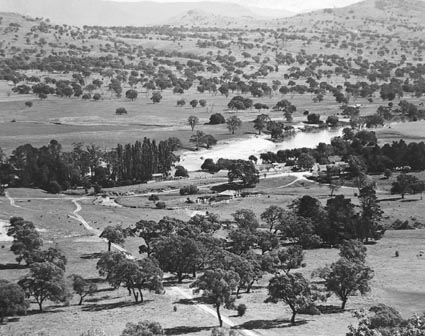Banks, Australian Capital Territory on:
[Wikipedia]
[Google]
[Amazon]
Banks is a suburb in the Canberra, Australia district of


Tuggeranong
The District of Tuggeranong () is one of the original eighteen districts of the Australian Capital Territory used in land administration. The district is subdivided into divisions (suburbs), sections and blocks and is the southernmost town cen ...
. It is the most southerly suburb of Canberra. The suburb is named after Sir Joseph Banks (1743–1820), the botanist who accompanied Captain James Cook to Botany Bay
Botany Bay ( Dharawal: ''Kamay''), an open ocean
The ocean (also the sea or the world ocean) is the body of salt water that covers approximately 70.8% of the surface of Earth and contains 97% of Earth's water. An ocean can also refe ...
in 1770. The suburb was gazetted on 12 March 1987. The theme of the street names is botany or natural history.
Banks is located adjacent to the suburbs of Conder and Gordon. It is bounded by Box Hill Avenue, Tom Roberts Avenue and Tharwa Drive. Located in the suburb is Beau and Jessi Park and the Banks Oval.
The Rob Roy Nature Reserve, part of Canberra Nature Park, is a hilly region to the east of Banks that includes Mt Rob Roy. Nearer and also to the east of Banks is the smaller mountain Big Monks, accessible from Wollemi Place. Big Monks has a gliding stage near the top, allowing paragliders and hang-gliders to fly over the suburb of Banks. The suburb itself slopes gently to the west-northwest.
There is a small shopping centre in the suburb, on the main internal road, Pockett Avenue. It includes 2 small take-away food shops, a pet shop and a small IGA supermarket.
Banks 1, Banks' only oval, is used for local events such as the Saint Clare of Assisi Primary School Athletics Carnival.
Geology

Alluvium
Alluvium (from Latin ''alluvius'', from ''alluere'' 'to wash against') is loose clay, silt, sand, or gravel that has been deposited by running water in a stream bed, on a floodplain, in an alluvial fan or beach, or in similar settings. Alluv ...
is the surface geology for the whole suburb. Beneath the alluvium and making up the surrounding hills are the Deakin Volcanics, which erupted during the Silurian
The Silurian ( ) is a geologic period and system spanning 24.6 million years from the end of the Ordovician Period, at million years ago (Mya), to the beginning of the Devonian Period, Mya. The Silurian is the shortest period of the Paleozoi ...
age 414 million years ago.Henderson G A M and Matveev G, Geology of Canberra, Queanbeyan and Environs 1:50000 1980.

References
External links
* {{Tuggeranong Suburbs Suburbs of Canberra